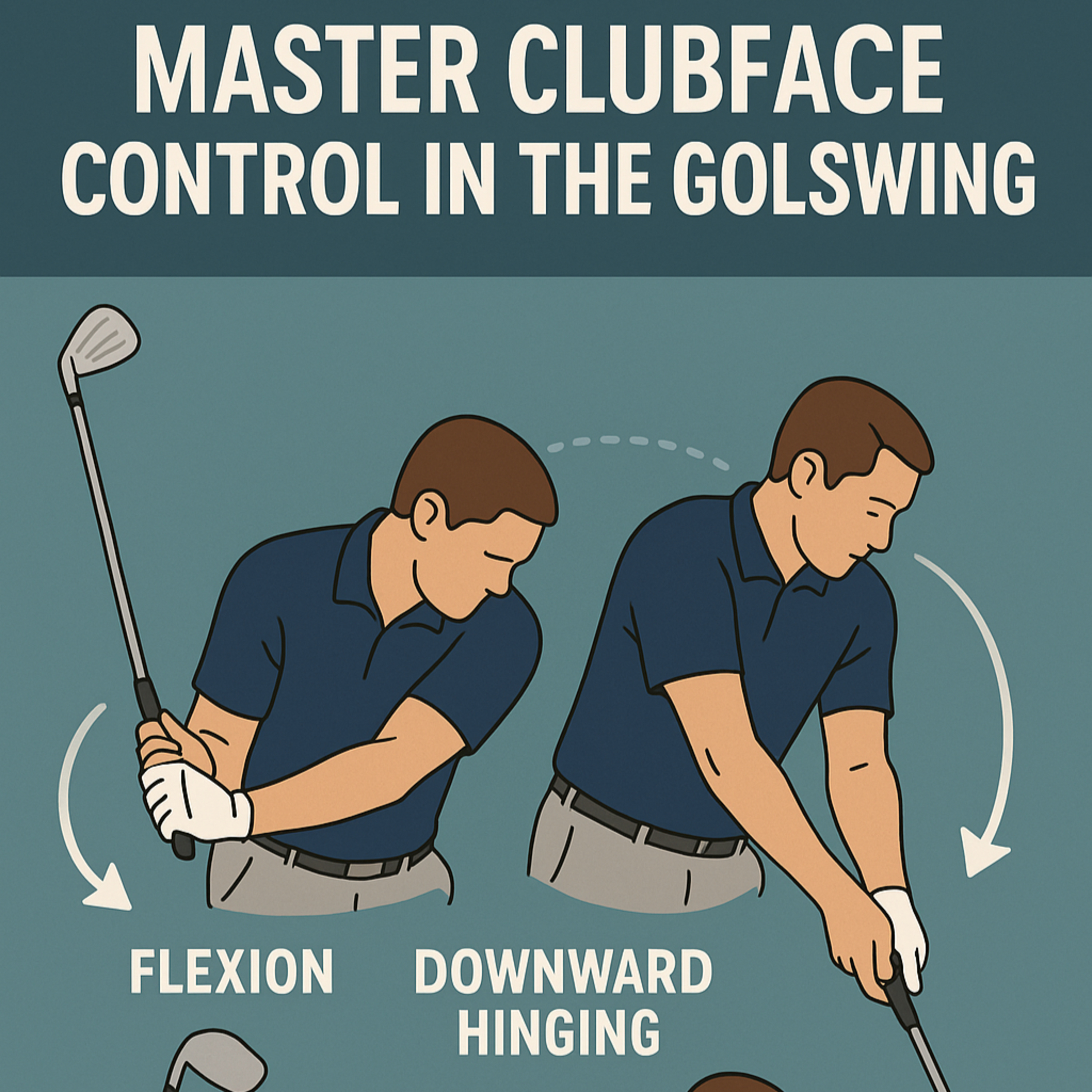#238 Mastering Golf Clubface Control
- Author
- Golf247.eu
- Published
- Thu 29 May 2025
- Episode Link
- https://podcasters.spotify.com/pod/show/puttin-pro/episodes/238-Mastering-Golf-Clubface-Control-e33dlb2
Mastering Golf Clubface Control by Henrik Jentsch, Director of Golf Academy 360°, powered by Sportsbox AI
One of the most critical elements of a consistent and powerful golf swing is mastering clubface control. As any serious golfer knows, the position and movement of the left hand—and specifically the back of the left hand—mirrors the orientation of the clubface. When your left hand moves, it directly influences the alignment of the clubface. This relationship is a fundamental principle that separates elite golfers from those still developing their skills.
Among elite players, we observe a specific sequence of wrist movements during the transition from the top of the backswing into the downswing. These movements—wrist flexion, ulnar deviation (or downward hinging), and supination—are essential for squaring the clubface at impact. Understanding and executing this sequence with precision greatly increases your chances of delivering solid, accurate shots.
Let’s break it down:
Wrist Flexion: As the golfer transitions from the top of the backswing, the first movement is a subtle but critical flexion of the left wrist. This flexion helps set up the proper angle for controlling the clubface during the downswing.
Ulnar Deviation (Downward Hinging): Following flexion, the golfer initiates a movement known as ulnar deviation, or “downward hinging” of the wrist. This is often referred to as the “unhinging,” where the wrist releases the stored energy from the backswing.
Supination: Finally, the wrist rotates, or supinates, through impact. This rotation squares the clubface, ensuring it is properly aligned to the ball at the moment of contact.
Professional golfers rely on this precise sequence—flexion, unhinging, and supination—to maintain consistent control over the clubface. When performed correctly and in the proper order, these movements ensure the clubface meets the ball squarely, resulting in solid and accurate shots.
In contrast, many higher-handicap golfers struggle with this sequence. They often begin the downswing by “casting” the club—releasing the wrist hinge too early. This premature release causes the club to open too soon, and any attempts at supination and flexion afterward are typically too late to correct the clubface’s alignment. As a result, the clubface remains open at impact, producing glancing blows that send the ball off-line, usually to the right.
The difference between elite and amateur players lies in the deliberate control of these wrist movements. Professionals train their wrists to flex at precisely the right moment, to unhinge smoothly, and to supinate in sync with the rest of the body’s rotation. This coordination allows for precise control over the clubface, enabling them to produce powerful and accurate shots.
For golfers aiming to improve, focusing on mastering this sequence is essential. Start by practicing controlled wrist flexion at the top of the backswing. Progress to practicing the unhinging motion during the early downswing, ensuring you retain wrist angle until just before impact. Finally, incorporate supination as the club approaches the ball, rotating the wrist to square the clubface.
Understanding and applying this sequence—flexion, downward hinging, and supination—can transform your ball striking. It’s not just about moving the hands; it’s about synchronizing these subtle wrist motions with the overall body rotation to deliver the clubface square at impact.
In summary, clubface control is the cornerstone of consistent and accurate golf shots. The back of your left hand is your guide, and the sequence of wrist movements—flexion, unhinging, and supination—is the path to precision. Master this, and you’ll bring your game one step closer to professional-level control.
